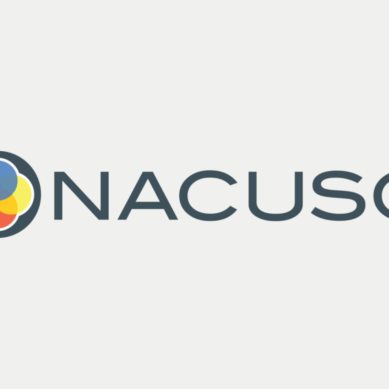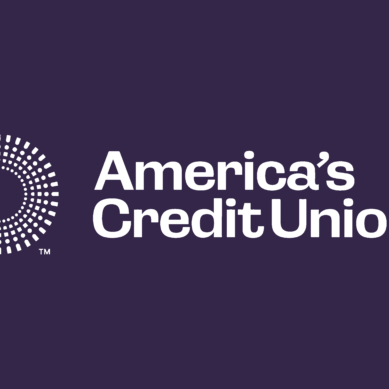Imagine you’ve just landed a new job as the Marketing Specialist for a credit union. You want to make an immediate impact, and you know just where to start. A website is often the first point of contact between a credit union and its members. It serves as a virtual branch, a marketing tool, and a platform for member engagement. However, even the most well-designed websites will become outdated over time. So is it time to make your mark and redesign your credit union website?
A stale or underperforming website can harm your brand, drive away potential members, and hinder your credit union’s goals. We will take a look at the signs and indicators that your website needs a refresh, or a full redesign, which is crucial to properly serving your members with an effective, user-friendly, and modern standards aligned website.
Is your website the new millennial gray?
The visual appeal of your website is one of the first things visitors notice. Websites are an inherently visual medium where your members interact with your credit union. Design trends can and do evolve rapidly, and a website that looked cutting-edge five years ago may now appear dated. Like fashion, don’t wait for website bell-bottom jeans to make a comeback. Table-style layouts, outdated fonts, low-resolution images, or an overload of flashy animations can make your site feel fresh out of the 1990s. Modern web design tends towards clean, minimalist aesthetics with intuitive navigation, and high-quality visuals that match your brand.
If your website still uses dated design elements like heavy drop shadows, skeuomorphic buttons, or a non-responsive layout, then hey, it’s a clear sign it needs a refresh. A modern design not only enhances user experience but also signals to visitors that your credit union is current and professional. Check competitor websites or industry leaders for inspiration. If your site looks like it’s stuck in a different era, it’s time for an update.
Please respond
With over half of global web traffic coming from mobile devices, a website that isn’t optimized for smartphones and tablets is a major liability. If your site doesn’t adapt responsively to different screen sizes, requiring users to pinch and zoom to navigate, your members will go elsewhere.
While non-responsive websites are quite uncommon now, it’s possible that an older site may not adapt as well as a modern one. Google’s mobile-first indexing also prioritizes mobile-friendly websites in search rankings, meaning poor mobile performance can hurt your SEO and visibility.
Try testing your website on multiple devices. If the layout breaks, text is unreadable, or buttons are hard to tap, there’s a good chance that a redesign is necessary. A responsive design ensures your site looks and functions well across all devices, improving user satisfaction and engagement.
The tortoise won’t win this race
Speed is critical on the modern web. Studies show that users expect a website to load in under three seconds, and even a single second of delay can significantly increase bounce rates. Slow loading times frustrate members and can negatively impact your search engine rankings, as Google considers page speed a key ranking factor.
Common causes of slow websites include unoptimized images, excessive plugins, outdated code, or poor hosting. Tools like Google PageSpeed Insights can help you assess your site’s performance. If your scores are low or members are abandoning your site due to sluggishness, it’s time to refresh your site with optimized code, compressed images, and a reliable hosting provider.
What’s the “ick” factor?
Are members spending less time on your site, or is your bounce rate increasing? Metrics like high bounce rates, low time-on-page, or declining conversion rates are red flags that your website isn’t resonating with users. This could stem from poor user experience (UX), confusing navigation, or content that doesn’t address your members’ needs. While most of your members will be going from your homepage right into online banking, capturing the share that browses to other pages is key to success.
Analyze your website analytics to identify patterns. For example, if members are leaving specific pages quickly, those pages may need better content, clearer calls-to-action (CTAs), or improved design. A redesign can address these issues by streamlining navigation, improving content relevance, and creating a more engaging user journey.
Update challenged
A website should be easy to manage and update, allowing you to add new content, products, or services without technical hurdles. If your site is built on an outdated content management system (CMS) or requires coding knowledge to make simple changes, it’s a sign that a refresh is overdue. Modern CMS platforms like WordPress, Shopify, or Squarespace offer user-friendly interfaces that empower non-technical users to maintain their sites.
A redesign can transition your site to a more flexible and scalable platform, making it easier to keep content fresh and relevant. This is especially important for credit unions that rely on frequent updates for rates or community events.
Consistently inconsistent
Your website should reflect your current branding guide, including your logo, color scheme, typography, and messaging. If your credit union has undergone a rebrand but your website still uses old visuals or outdated messaging, it creates a disjointed experience for members. Inconsistent branding can confuse members and make your credit union appear unprofessional.
Review your website to ensure it aligns with your current branding guide. If there’s a mismatch, a refresh can help unify your online presence with your physical one, reinforcing brand recognition and trust across all areas.
SEO problems?
If your website is struggling to rank on search engines, it may be due to outdated SEO practices or technical issues. Search engine algorithms, like Google’s, evolve constantly, prioritizing sites with fresh content, proper metadata, mobile optimization, and fast load times. An older website may lack proper schema markup, optimized URLs, or keyword integration, all of which are essential for modern SEO. Certain plugins for popular CMS such as WordPress can help streamline this process.
Conduct an SEO audit to identify areas for improvement. If your site is built on an outdated platform or lacks modern SEO features, a redesign can help you incorporate best practices, boosting your visibility and driving organic traffic.
Don’t be insecure
Cybersecurity is a top concern for both credit unions and members. An outdated website, especially one running old software or plugin versions, is vulnerable to hacks, malware, and data breaches. If your site lacks an SSL certificate (indicated by “http” instead of “https” in the URL), it’s less secure and will be penalized by search engines and browsers, which warn users about unsafe sites. SSL certificates are industry standard and can often be procured free of charge.
Check when your website’s software, plugins, or CMS were last updated. If they’re outdated or no longer supported, a redesign can incorporate modern security features, such as SSL certificates, secure hosting, and regular updates, to protect your site and members.
When you’re a hammer…
Today’s websites often integrate with tools like CRM systems, email marketing platforms, analytics tools, or social media. If your website doesn’t support these integrations or requires complex workarounds, it’s limiting your ability to leverage data and automate processes. A redesign can ensure your website is compatible with the tools your credit union relies on, streamlining operations and enhancing user experience. A redesign can also add new functionality to your website and offer members increased value.
A website built for everyone
The modern web is an inclusive place. If your website isn’t conforming to modern web standards, you may run into ADA conformance issues. Check your website with an ADA tool, and if it doesn’t pass, you may need to consider a redesign. Contrast, touch event sizes, legible fonts, and proper markup are all necessary for a website to conform to the WCAG standards. Check with a website professional to see if your current website is friendly towards any visually challenged users.
Your competitors are doing it better
Finally, take a look at your competitors’ websites. If their sites are more visually appealing, faster, or easier to navigate, they’re likely attracting more members. A competitive analysis can reveal gaps in your website’s performance and highlight areas for improvement. Ask your members what they like about your website, and what they would change. If your competitors are offering features like live chat, personalized recommendations, or automatically updating rates, and your site is lagging, it’s time to act.
A website refresh or redesign can help you match or surpass industry standards, ensuring you stay competitive in your market.
So, is it time?
Your website is a dynamic asset that requires regular attention to remain effective. By paying attention to signs like outdated design, poor mobile responsiveness, slow load times, declining engagement, or security vulnerabilities, you can identify when it’s time for a refresh or redesign. A well-planned update can enhance your members’ experience, boost search rankings, strengthen your brand, and drive growth. Don’t wait for your website to become an embarrassing liability. Remain proactive and keep it fresh, functional, and aligned with your credit union’s goals.
If you’re unsure where to start, consult with website professionals or use analytics tools to assess your site’s performance. Putting resources into a website refresh is an investment in your credit union’s future, ensuring you make a strong impression in an increasingly competitive market.























































